31 Days, 31 Lists: 2023 Funny Picture Books

There’s no one way, but there sure as heck is a wrong way. Ever read a picture book trying to be funny and you can just, somehow, feel it trying to make a kid laugh? Kids are one of the toughest audiences a performer can ever face. If they don’t like something, they often aren’t going to be polite about it. They are more than willing to tell you to your face when a joke lands flat or fails to take off in the first place. Today we celebrate the books willing to take that risk and potentially face that scorn. Now humor is, as I’ve often said, a deeply subjective art. What makes me laugh may not amuse you in the slightest. Even so, here are the 2023 picture books that I think deserve their time in the spotlight for hilarity. And be sure to tell me the ones you think that I missed!
You can download a PDF of today’s list here.
Previous lists of funny picture books are well worth seeking out too. They include:
2023 Funny Picture Books
The Brilliant Ms. Bangle by Cara Devins, ill. K-Fai Steele
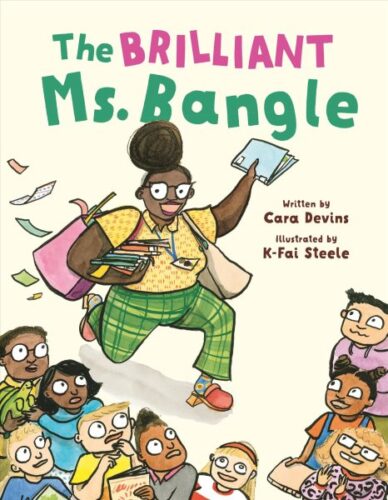
I’m in this weird position where if I like an illustrator enough I begin to plan and scheme about their future. More specifically, I want to do a book with them someday. K-Fai Steele? She’s on that list and you need go no further than The Brilliant Ms. Bangle to see why. This book expertly taps into kids’ predilections towards blind loyalty. In this case, the school librarian has retired and has been replaced by the wonderful Ms. Bangle. You will like Ms. Bangle. You adults out there would undoubtedly like to hang out with her and be her friend. And, naturally, if you’re a kid, you’re going to want her to be YOUR librarian. The kids in this book resist her as long as humanly possible, but it is impossible to resist Ms. Bangle entirely. Not when she’s offering the chance to read a book that literally had me laugh out loud called Daisy at the Lagoon (complete with a sad-faced blond child slowly sinking into the mire). For fun K-Fai ends the book with the kids in the class reading the entire Daisy series, which just seems to consist of her falling into various hilarious perils every step of the way. Extra points to author Cara Devins when she has Ms. Bangle offer to read the stubborn kids, The Rise of Lithographic Printing in Eighteenth-Century England. “Silly me… You’ve probably already read that!”
ADVERTISEMENT
ADVERTISEMENT
Fish and Crab by Marianna Coppo

Don’t worry, kids. Even crustaceans get anxiety. Fish and Crab are best friends and even share a bedroom ala Ernie and Bert. However, when nighttime falls Fish simply cannot get to sleep. There are weird noises to identify. There are worries to be attended to. When Fish enlists Crab’s help in alleviating his fears, Crab asks Fish to tell him ALL his worries. This is a mistake. As the fears pile up one by one (with Crab’s snarky commentary along the way) Fish’s mind is put at ease . . . and now Crab’s the one staring into the dark, full of existential dread. If you know me then you’ll know that I love me a little existential dread in my picture books. You get yourself two adults to read this book aloud and you could essentially make reader’s theater out of it. More than once I found myself snorting out loud at some of the more ridiculous elements. It’s a hoot, pure and simple. Bonus: Look under the cover if you get a chance. Worth it.
Fox Has a Problem by Corey R. Tabor

Doggone it, Corey. Stop being quite so good at what you do! You know, it seems just a little unfair to me that Mr. Tabor has managed to not only conquer the Easy Book genre with his inimitable Fox series, but picture books as well. You graphic novelists out there better start watching your backs. This man has talents. In this particular case we’re looking at a pretty darn simple easy book where our hero, the titular Fox, has gotten his kite caught in a tree. But the whole reason this book works as brilliantly as it does is that Tabor is a master of not simply the page turn but the funny page turn. So the first page may show Fox looking at his inaccessible kite as it says, “Fox has a problem.” Then you turn the page and see a small forest filled with kites caught in trees as the book says with incredible simplicity, “It is not a new problem”. Charlie Brown has NOTHING on Fox. The cure soon proves worse than the disease, and here I am with my jaw on the floor, in perfect awe of Tabor’s skills. Not since the Elephant and Piggie books have we had someone write easy books with this much raw talent. I say if you read only one easy book this year, read this one.
How Dinosaurs Went Extinct: A Safety Guide by Ame Dyckman, ill. Jennifer Harney

Children’s librarians and reviewers and booksellers (and probably editors and agents, for that matter) are often in danger of mission creep. You start out so delighted to read thousands and thousands and thousands of picture books and after a decade or two you’re still excited but now your frame of reference is so vast that nothing’s new anymore. You feel jaded. Like you’ve seen it all. Then someone comes up with a concept so obvious but that no one in the history of the universe has ever done before that you just sort of sit there stunned for a while. That’s how I felt when I read How Dinosaurs Went Extinct. I mean, we’ve seen safety-related picture books before (most famously in Officer Buckle and Gloria, of course) but this book has a memorable alternative take on the whole process. A kid goes with his parents to the museum (and you can see them running and warning him to slow down on the steps leading inside) and while there wonders why the dinosaurs went extinct. The mom begins with a real answer but the dad (wearing a fantastic, faded, vintage-looking Dadasaurus Wrecks t-shirt) proceeds to outline all the different ways that each species met its end. Gallimimus? Ran with scissors. Ankylosaurus? Tipped their chair book too far. Ornithomimus? Jumped on the bed. You never see the actual demise of any of these dinos, but you do see them participating in every possible bit of bad behavior. Extra points to Jennifer Harney not only making these dinos rival those in the Yolen “How Do Dinos” series in terms of fun and frenzy, but also for those endpapers where it’s now the kid warning his parents to be careful on the stairs.
How to Count to 1 by Caspar Salmon, ill. Matt Hunt

Ah, the old reverse psychology picture book. Love the format. So this little British import essentially forbids kids from engaging in counting for fun which, naturally, will make them want to do it all the more. We talk a lot about how to make math engaging for children but did we ever consider trying to prevent it from happening? I think this is a mildly brilliant solution. The intrusive narrator of this book is going to be very clear with you. You are only allowed to count a single thing on each of these pages. But as the book goes on you start to see a numerically increasing number of objects with a teeny tiny single thing that’s the only thing you are instructed to count. Play your cards right and you, the adult reader, can be the one trying to prevent your kids from counting. Which, in and of itself, is fairly hilarious. It’s sort of the old The Monster at the End of This Book technique (you know, where Grover begs you not to keep turning the pages) but with addition. And the last two pages are full of 100 things, so if they’ve gotten bitten by the counting bug, they’ll know how to use those skills.
I Can Open It For You by Shinsuke Yoshitake, translated by Lisa Wilcut

You know, part of the reason that Shinsuke Yoshitake is as successful as he is at creating picture books is that he’s incredibly good that finding those childhood frustrations and challenges that we adults have all completely forgotten about. For example, the mere act of opening things. We do it all the time, but often kids need help, whether it’s a milk carton or a candy wrapper. In this book, a child fantasizes about all the different things he’ll be able to open when he’s bigger. His dreams start off pretty standard but quickly morph into their most logical extremes (“opening” a politician’s fly or a rock containing ancient bones). What sort of sets this book a little apart from some of Yoshitake’s other works is how it gets a bit touching near the end. The boy’s dad confesses to him that he enjoys opening things for his kid so much because he knows that someday soon he won’t have to anymore. As ever, Yoshitake nails the ending, and I love the more Japanese elements of the book are. From a bath in a home to bowing thanks to your mom when she opens something for you, it may be located in a specific place but it touches on a universal theme.
I’m Sticking With You – And the Chicken Too! by Smriti Prasadam-Halls, ill. Steve Small
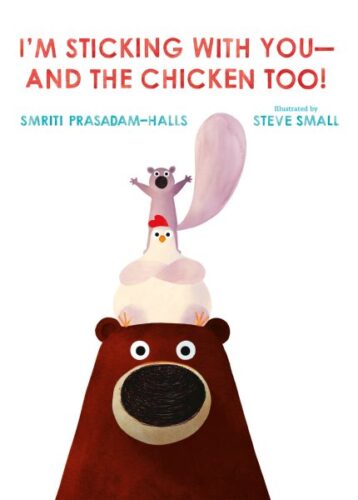
Not to cast shade upon this book’s predecessor (I’m Sticking With You) but having 100% completely forgotten about it, I came to this book with an open mind and found it contains two of my favorite funny picture book animals: chickens and bears. Honestly, you could probably just do an entire chicken and bear picture book series and I’d be the first in line to buy it. Here, a squirrel and a bear are best buds and are strict adherents to the old adage that three’s a crowd. They are pestered (or so they’d say) by a friendly chicken who’d like to play her accordion with the duo. To say that they are not interested is putting it mildly. They’re downright rude! And the chicken, for its part, continues until it just becomes all too obvious that they don’t want it. Heartbroken, it replies to a sketchy ad looking for chicken musicians. Only then do the bear and squirrel (who feel pretty bad about their behavior) make it up to the chick. The text is good but the humor here is found in the art. Small can do a lot with eyebrows, accordions, and sidecars. Maybe it’s more of a droll humor book than that of the laugh-out-loud variety, but I’ll take it!
I’m Trying to Love Germs by Bethany Barton
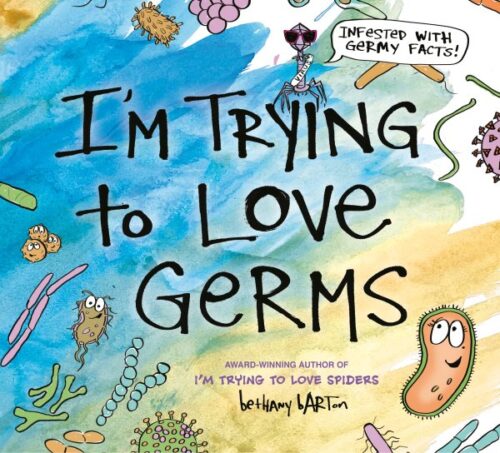
Some nonfiction with your picture books? Absolutely. Any book that can claim to be “infested with germy facts” by a virus wearing red sunglasses is probably going to be worth your time and investment. Not that this is Barton’s first time at a rodeo. Or second. As it happens this is the sixth entry in the “I’m Trying to Love” series, following books dedicated to spiders, rocks, math, garbage and bees. But as a small microbe at the beginning of the book is quick to point out, the title of this book is all wrong. It should be called “I’m Trying to Love Microbes”. Aside from teaching me things that I actually did not already know (I’m particularly interested in bacteriophages now, as it happens), the book’s a hoot. Extra points for the moment when it compares germs to glitter (“Imagine if when you coughed or sneezed a whole bunch of glitter came out”). Funny and informative, but not in a gross way.
I Want to Be Spaghetti by Kiera Wright-Ruiz, ill. Claudia Lam
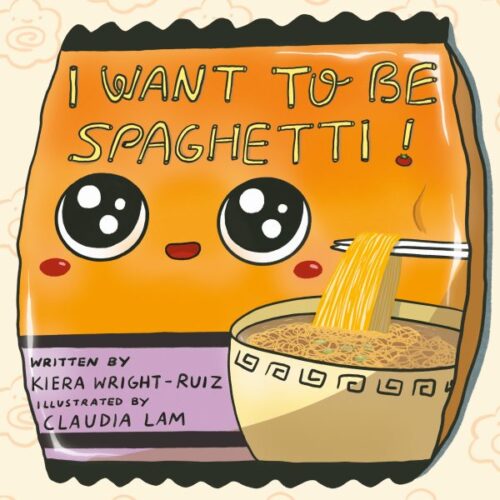
I was getting some strong Arnie the Doughnut vibes in this book early on, though the hero of this tale, while edible, actively WANTS to be eaten. Only it’s not just that. Ramen has dreams. Now I want you to look deep deep into the eyes of this tasty treat (which you can easily do with this cover) and realize that in this story this is a foodstuff that has failed to learn its own cultural roots. In this story Ramen wants desperately to be spaghetti because “everyone” loves it. While the other ramen packets object vociferously, Ramen is unmoved from this uncritical stance. Fortunately, all becomes clear when he is purchased and prepared. I loved the moment when half a hard boiled egg is dropped into his bowl and he has this moment of complete and utter confusion. “What are you doing here?” I had a similar moment when I encountered my first real ramen. Consider pairing this with one of my favorite ramen-related nonfiction picture books Magic Ramen by Andrea Wang (who happened to write a Caldecott-winning picture book, also food-related, by the name of Watercress not long after).
Is This … Winter? by Helen Yoon

Folks, we gotta do something. Something about the fact that Helen Yoon isn’t getting the levels of attention she so richly deserves. First off, I adore her angular style which manages to convey movement with a clever application of odd lines here and there. In this book a pup is totally out of its friggin’ gourd excited about winter. It’s high fiving mailboxes and freaking out squirrels and birds, but when it crashes into a snowman reducing it to rubble (is that the right term or should a busted up snowman be called something else?) things take a turn. Suddenly the pup notices some reindeer decorations and things start to get weird. For any child that has ever encountered holiday blow-up dolls that crossed a little too far into the uncanny valley, this book is for them. And, of course, Yoon’s art is a joy each and every time. Previously seen on the holiday booklist.
Mine! A Story of Not Sharing by Klara Persson, ill. Charlotte Ramel, translated by Nichola Smalley

We have all been Sally at some point in our lives. Sure, the whole concept of sharing sounds great on paper, but when push comes to shove and you actually have to do it? Count me out!! Sally’s friend Nico is coming over to play and right from the start Sally informs Mom that there is no way in the world that Nico’s going to play with her stuffed squirrel. Her mom, being a patient and logical soul, suggests putting the squirrel in the wardrobe until Nico’s gone. Unfortunately this well-meaning suggestion just gets Sally started. If the squirrel can go in the wardrobe then so can her train. And her car park (love that translation). And her fish you catch with a fishing rod. Then things start to get extreme. In goes her bed! Her bathtub! Her mom!! And even when Nico comes she doesn’t stop because what if her friend Eva came by and wanted to play with HIM? Into the wardrobe goes Nico! It’s only when Sally hears how much fun everyone’s having in the wardrobe without her that she relents and lets everyone and everything out. Persson ratchets up the humor by taking Sally’s instincts to their logical extreme. Meanwhile Ramel knows how to give this already spartan (compared to a couple American houses I know) home a real thorough emptying out. Sharing may be caring but hoarding isn’t boring. Forgive me.
Mister Kitty is Lost! by Greg Pizzoli

I submit to you that though the shape of this book is picture book square, the simplicity of the text makes it an excellent candidate for the Geisel Award (given yearly to books for beginning readers). With die-cuts galore, a little white girl goes about trying to locate her lost kitty. Look closely at her drawing of her missing pet, by the way. It doesn’t give away the funny twist but, upon closer inspection, it does hint at it. A counting book as well, everything leads up to a big reveal. I suspect that this would also make an excellent readaloud for a large group of Kindergarten or 1st graders. Particularly with that surprise “ROAR!”. It really comes outta nowhere. Go, kitty, go! Previously seen on the readaloud booklist.
Mr. S by Monica Arnaldo

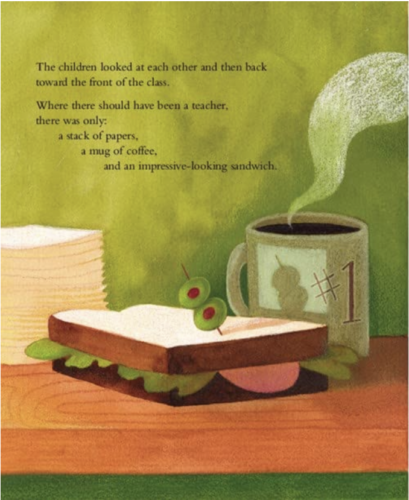
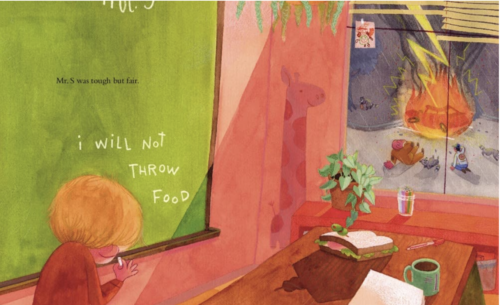
When a classroom full of new Kindergartners come in on the first day of school they don’t find any adults, just a sandwich on a desk. Could this be their teacher?!? Initially when I heard the premise of this book I thought it was just a logical extension of that moment on The Good Place where the main characters can’t figure out if a supernatural judge is a burrito on a desk or not. This lifts that premise and places it on the first day of school where a classroom of kindergartners come to the logical conclusion that the sandwich on a desk is definitely in charge. Personally I also loved the background story of what’s happening to Mr. Spencer (the man seen writing on the blackboard at the start) all the while. Good twist, great art, and you’ll see why Adam Rex’s blurb on the back says, “This might be the funniest first-day-of-school book I’ve ever read.” The man’s not wrong.
No Fair! by Jacob Grant

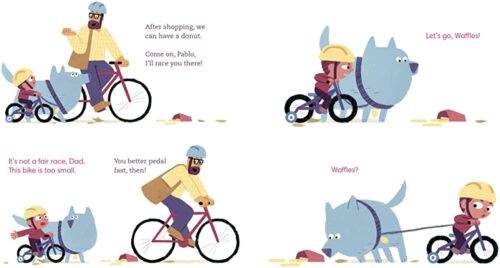
Ostensibly a follow-up to Grant’s previous picture book No Pants! (and that is, let us face it, a hard title to top), this book follows a kid’s innate sense of what is and is not fair. For example, it’s the kind of book where the main character will early on see a mom and child having the same size donuts at the farmer’s market, but when the time finally comes for his cider, Dad gets a big one and his kid gets a tiny one. Dad’s trying to be patient here, but Grant is expertly weaving between understanding where the father is coming from and being totally Team Kid. Best of all, there’s a nice capper at the end with the kid getting his comeuppance in more ways than one, thus balancing the fairness of the universe. And if there’s one thing kids can understand, it’s things not being just. So where’s the funny? Well, like the identification with the two characters, sometimes the joke’s on the kid and sometimes it’s on Dad. And watching Dad try to balance carrying a million groceries (including donuts and a huge pumpkin) at the end? Classic.
Oh No, the Aunts Are Here by Adam Rex, ill. Lian Cho
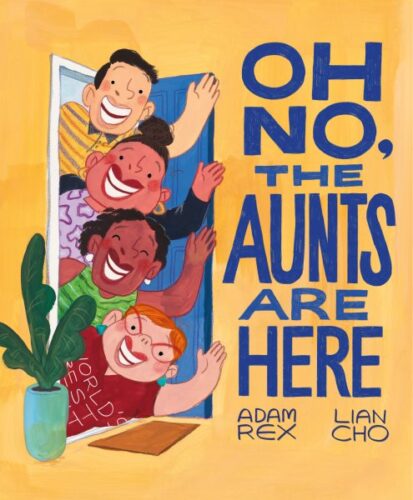
Hard to say if I find this funnier for kids or adults. It may have to be taken on a case-by-case basis. But to start us off here, let me just recount for you a typical selection from this book. “The aunts lick their thumbs and polish your cheeks. There was something there, they tell you. Something there, on your cheeks, but they got it. You don’t know what it was and you never will.” This is what I like to call a Rex flex. He’s stretching his writerly muscles as far as they can possibly go, and doing what I like most about his writing: taking things to that sweet illogical extreme. Lian Cho was new to me. I’d seen two of the books she’d done before (The Oboe Goes Boom Boom Boom was a late in the year find that I was very fond of when it was released) and clearly some canny editor saw the high energy of that and felt it would make a great match with the Rex text (I can do this all day, folks). The plot, such as it is, is that a group of four aunts, all sorts, descend upon a young girl’s home, bringing annoyance as well, ultimately, as aunt-centric protection. I’ll tell you this much: You ain’t never seen a book like this before!
Problem Solved by Jan Thomas
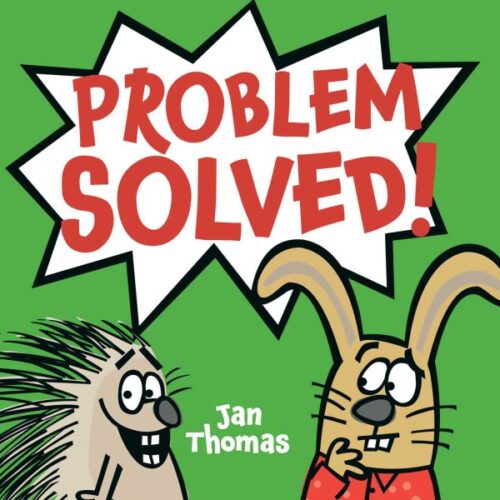
I would walk across red hot coals to get my hands on the next Jan Thomas book, you betcha. She’s one of those author/illustrators that somehow had a pitch perfect instinct from day one for writing picture books with simple texts. But what always appeals to me in addition to her writing is her ability to tap into the occasional bout of crazed chaos. You can see it in the whites of the eyes of the problem-solving porcupine on the cover of this book. That’s Pete. When a rabbit with a messy room makes the mistake of saying, “This is a problem”, Pete’s on the scene to help. Sorry, I wrote that wrong. Pete’s on the scene to “help”. Because, you see, Pete’s help comes in the form of doing terribly ridiculous things. He’ll neatly fold the rabbit’s shirts… then attempt to feed them to his goldfish. “PROBLEM SOLVED!” Or he’ll stack up all the blocks… and then attempt to flush them down the toilet. The toilet actually gets a repeat performance in this book (to great comic effect) until Rabbit comes up with a clean room (through constant work following Pete) and a way for Pete to “help” someone else. Thoroughly wacky, but also perfect for new readers. Thomas knocks it out of the park again.
Spreckle’s Snack Surprise by Sandra Salsbury

ADVERTISEMENT
ADVERTISEMENT
Any book that advertises itself as “100% Slug Free” is already going to be fairly interesting. Extra points if the book in question is about a little dragon raised by chickens. Now there are a number of different directions that this book could go in with a plot like that, but I’m awful fond of Sandra Salsbury’s style. For example, Spreckle is all on board with living on the farm except “the snacks were not very good. In fact, the snacks were becoming a real problem for Spreckle.” I love the understated nature of these complaints. The illustration style is naturally, in and of itself, funny. And the solution to the snack issue? Mildly inspired. Love the slugs. Love the art. Love the whole dang thing. Funny in an understated but vital way.
Stranded! A Mostly True Story from Iceland by Ævar Þór Benediktsson, ill. Anne Wilson

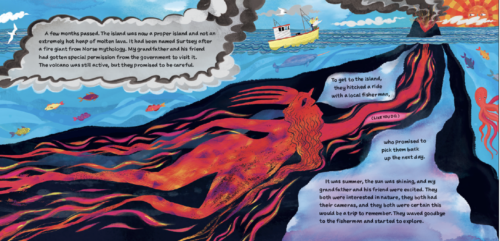
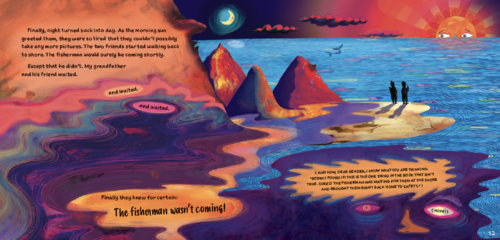
Almost all the facts in this book are true. Can you find the single lie? When the author’s grandfather got stranded on an active volcanic island with this friend their survival was NOT guaranteed. An unexpectedly hilarious and harrowing tale. Kooky little bit of writing, but I think it’s that kookiness that makes it work. First and foremost, this is really very funny. I think that there’s a lot to be said for authors writing stories about their grandparents’ stupid stupid decisions. About the point the glasses have melted, you are ON BOARD with this book. And the fact that you just happen to learn a lot about volcanoes and Iceland (and I’m grateful for now always knowing how to pronounce “Ævar”) is just the icing on the cake. A delightful read!
The Welcome Home by Amy June Bates
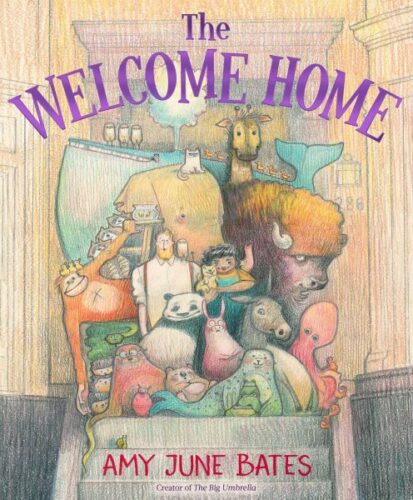
What do you do when you want something soft and waggy? Get a snail of course! Watch the antics pile up as Mr. And Mrs. Gargleson-Bittle fill their home with an array of critters, without knowing which one is truly missing. Wow! What a thrilling departure for Amy June Bates! She’s always been an emotional illustrator, tugging at those heartstrings for all that they’re worth. For a while there she was also the go-to for every politician that ever wanted to do a picture book biography. This book is a vast improvement and just look at her! She’s amazing at rendering sight gags! I just want to get a tattoo of that grumpy cat and grumpy owl for life. Truth be told, this is a delight. If I have a quibble, I feel she could have ended on a gag, but that’s a minor complaint. All told, this is strong.
What If I’m Not a Cat? by Kari-Lynn Winters, ill. Kelly Collier
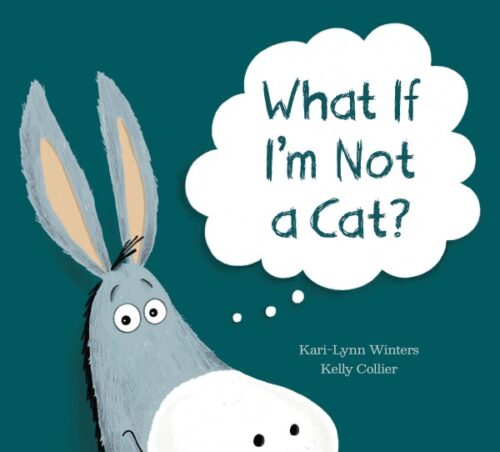
Good-natured goofiness. Kids love a book where they can see where someone (preferably an animal) makes an honest mistake that they themselves can see right through. In this particular case, a donkey is fairly certain that he’s a cat. After all, why else would the Farmer say, “Goodnight, kitty cats!” when he’s in the room? Determined to be the best cat, if that’s his fate, Donkey does what he can but while some aspects of catitude is easy (pouncing and cuddling) others are not (catching mice, landing on four feet, etc.). As the book progresses you get to know the individual cats fairly well, and donkey’s just so lovable in his confusion. Sort of reminded me of a cloven-footed Lambert the Sheepish Lion. Kelly Collier has a lovely feel for facial expressions and while I wouldn’t call this one necessarily laugh-out-loud, there’s definitely a great deal of funny to be mined here.
Hope you enjoyed these! Here are the lists you can expect for the rest of this month:
December 1 – Great Board Books
December 2 – Picture Book Readaloud
December 3 – Simple Picture Book Texts
December 4 – Transcendent Holiday Picture Books
December 5 – Rhyming Picture Books
December 6 – Funny Picture Books
December 7 – CaldeNotts
December 8 – Picture Book Reprints
December 9 – Math Books for Kids
December 10 – Gross Books
December 11 – Books with a Message
December 12 – Fabulous Photography
December 13 – Translated Picture Books
December 14 – Fairy Tales / Folktales / Religious Tales
December 15 – Wordless Picture Books
December 16 – Poetry Books
December 17 – Unconventional Children’s Books
December 18 – Easy Books & Early Chapter Books
December 19 – Older Funny Books
December 20 – Science Fiction Books
December 21 – Fantasy Books
December 22 – Comics & Graphic Novels
December 23 – Informational Fiction
December 24 – American History
December 25 – Science & Nature Books
December 26 – Unique Biographies
December 27 – Nonfiction Picture Books
December 28 – Nonfiction Books for Older Readers
December 29 – Audiobooks for Kids
December 30 – Middle Grade Novels
December 31 – Picture Books
Filed under: 31 Days 31 Lists, Best Books, Best Books of 2023
About Betsy Bird
Betsy Bird is currently the Collection Development Manager of the Evanston Public Library system and a former Materials Specialist for New York Public Library. She has served on Newbery, written for Horn Book, and has done other lovely little things that she'd love to tell you about but that she's sure you'd find more interesting to hear of in person. Her opinions are her own and do not reflect those of EPL, SLJ, or any of the other acronyms you might be able to name. Follow her on Twitter: @fuseeight.
ADVERTISEMENT
ADVERTISEMENT
SLJ Blog Network
One Star Review, Guess Who? (#211)
Kevin McCloskey on ‘Lefty’ | Review and Drawn Response
Notable NON-Newbery Winners: Waiting for Gold?
The Seven Bills That Will Safeguard the Future of School Librarianship
Take Five: Newbery Picks, Part Two
Gayle Forman Visits The Yarn!
ADVERTISEMENT



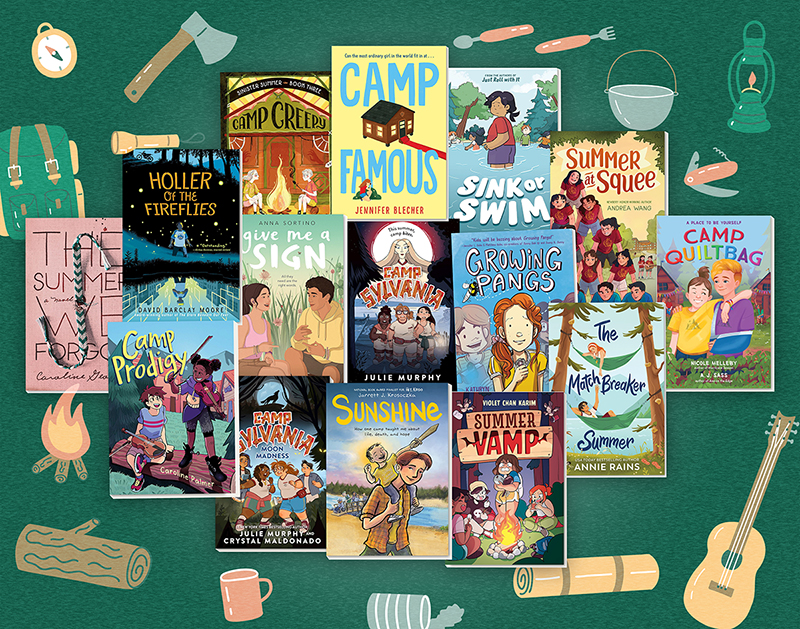
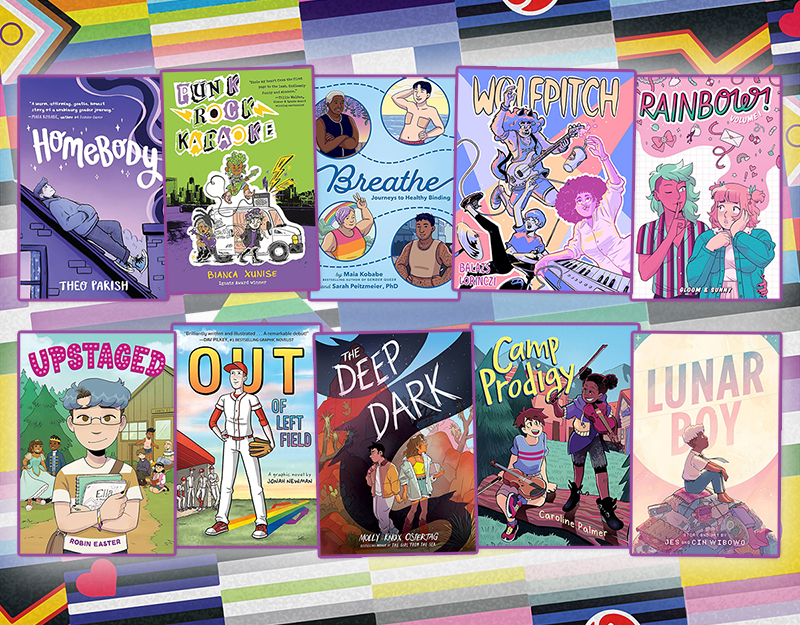
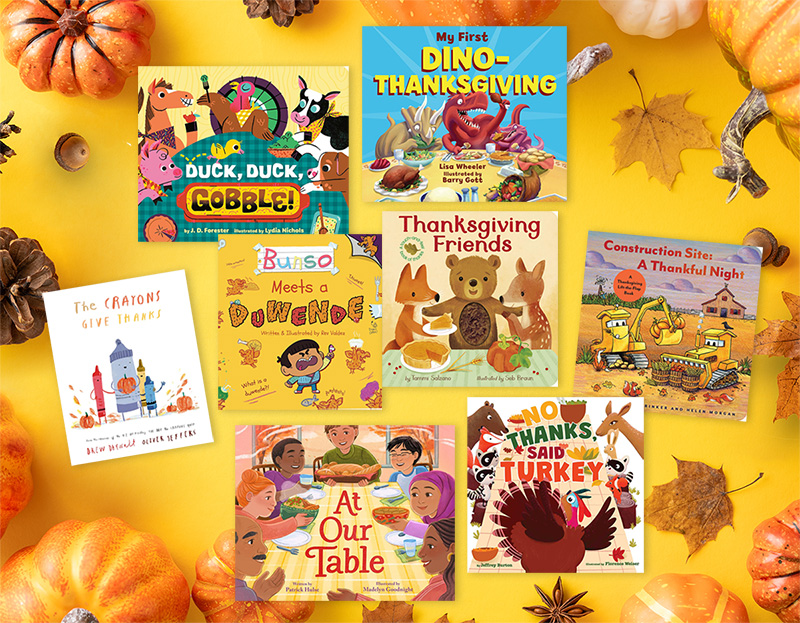
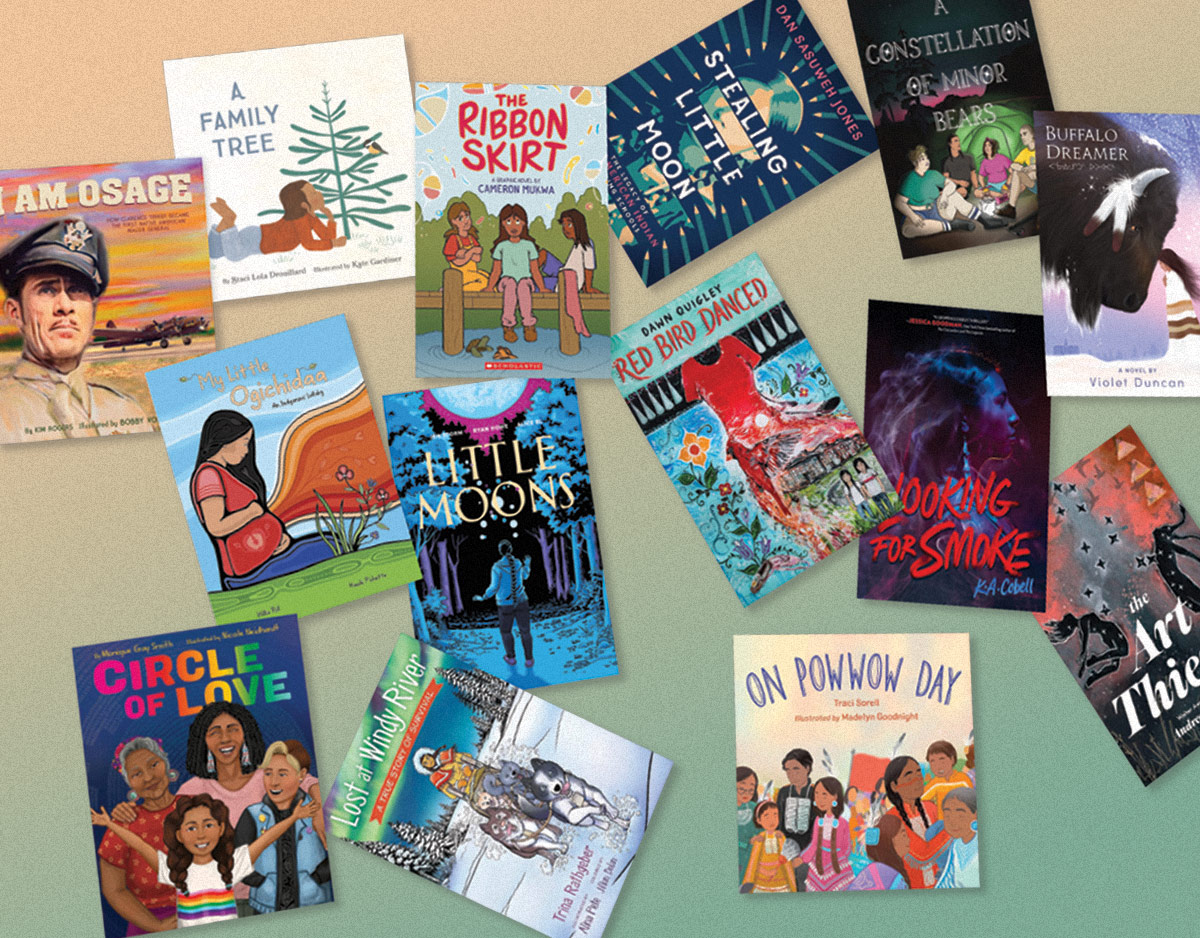

I LOVE your lists and look forward to them every year! Thank you so much for curating them!
Here are (some of) my votes, which I just purchased at Books of Wonder today:
GRANDMOTHERS GALORE by Judith Henderson. Funny and just fun.
THE MUSEUM OF NOTHING by Steve Guarnaccia. More sophisticated. Not sure how kids will like it but a winner for adults. I have to go read it to some kids now and see what they think.
HOW TO COUNT TO ONE. When I first heard about this book via a librarian at CCBC in Madison, I right away thought, “Ahhhh . . . A Betsy-Bird book!” I just KNEW it would make your list. And now I’ve seen that it made it twice!
Thanks for doing these lists!
Jean
You are so right about “funny”. My husband and his mother shared a similar sense of humor that drove me crazy with jealousy because I so wanted to be included and just couldn’t get what they found so amusing about certain things. But, oh, the joy when I do have a similar reaction to something with another. When “funny” happens within a reading experience with children it is pure joy and can be such a builder of community and belonging in a classroom of students. There is something about the shared memory of a word or sentence that continues to connect.
“Betsy Bird funny” to me is LONG ROAD TO THE CIRCUS.
Why thank you!
I also like Goodnight Playground by Teresa Keene. Great book for younger kids and will help parents get the kids off the playground when it’s time to go home.